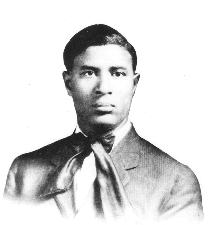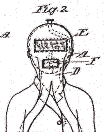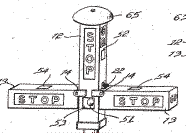
The Twofold Genius of Garrett Morgan
Garrett Morgan was an African-American inventor who invented two very different and important things: the gas mask and the traffic signal. During his long life, he also became one of the most recognized and respected African-Americans in the country.
Morgan was born on March 4, 1877, in Paris, Kentucky. His parents were former slaves. As a child, he attended school and also worked on the family farm. When he was an older teen, he moved to Cincinnati to find work. He found it as an apprentice to a handyman, who paid young Garrett enough to hire a tutor and continue his studies.
 When he was 18, he moved to Cleveland and found work repairing sewing machines and making clothes. It was also in Cleveland that he found the woman he would marry, Madge Nelson. They married in 1896 and were married for two years before getting divorced. When he was 18, he moved to Cleveland and found work repairing sewing machines and making clothes. It was also in Cleveland that he found the woman he would marry, Madge Nelson. They married in 1896 and were married for two years before getting divorced.
Morgan made enough money to open his own sewing machine repair shop, which he did in 1907. He was so successful that he expanded his business two years later to include making clothes, using equipment that he had built himself.
A year before, in 1908, he had helped form the Cleveland Association of Colored Men. In that same year, he had also gotten married for the second time, to Mary Hasek. They eventually had three sons.
The same skills that made Morgan a successful inventor and businessman also fired his curiosity and drove his inventions. He would see a need for something and then go about trying to find something that filled that need; if that something didn't exist, then he would make it himself. He had done this with his sewing equipment business, to great success. (He had 32 employees working for him.)
One thing that Morgan noticed early in the 20th Century was that people who fought fires and had other reasons to go into tunnels filled with smoke and fumes had no means of protecting themselves from breathing all that bad air. So, he invented what would eventually become the gas mask. This was in 1912, and  he patented the device two years later. His device had a canvas hood that was connected to tubing in the back that had an open end that contained a water-soaked sponge. This sponge would filter out smoke and allow cool air to get in. he patented the device two years later. His device had a canvas hood that was connected to tubing in the back that had an open end that contained a water-soaked sponge. This sponge would filter out smoke and allow cool air to get in.
This invention wasn't exactly an overnight sensation until 1916, when Morgan used it to perfection in rescuing several people trapped underground as the result of an explosion at the Cleveland Waterworks. It was July 25 to be exact, and the feat made the national news. Very soon after that, Morgan received orders for his device from fire departments across the country. (Some historians maintain that Morgan's device was the prototype for the kind of gas mask that was used by the American Army during World War I.)
Morgan branched out again in 1920, starting a newspaper, the Cleveland Call. He made good money from running this newspaper, and he soon bought a home and a car. (Some historians say that he was the first African-American to own a car.)
The automobile was a relatively recent invention, and it was by no means the only method of transportation used by Americans. Many people still rode in horse-drawn carriages or rode bicycles or walked in the streets. People driving cars went much faster, of course, and accidents were commonplace.
 Seeing this, Morgan decided to do something about it. He invented what would become the traffic light. Several people had invented different kinds of traffic signals by this time, but they weren't good enough for Morgan, who designed one that had some familiar features: a T-shaped pole that had a signal on the top, with three positions. These three positions were Go, Stop, and All-Stop. This last position applied to people coming from every direction, and was used to make sure that pedestrians could cross the street safely. Morgan received a patent for his device in 1923 and eventually sold it to General Electric. It was used throughout America until it was replaced by the traffic lights that are still used today. Seeing this, Morgan decided to do something about it. He invented what would become the traffic light. Several people had invented different kinds of traffic signals by this time, but they weren't good enough for Morgan, who designed one that had some familiar features: a T-shaped pole that had a signal on the top, with three positions. These three positions were Go, Stop, and All-Stop. This last position applied to people coming from every direction, and was used to make sure that pedestrians could cross the street safely. Morgan received a patent for his device in 1923 and eventually sold it to General Electric. It was used throughout America until it was replaced by the traffic lights that are still used today.
He died in 1963 after a long and successful life. His two outstanding inventions live on.
|